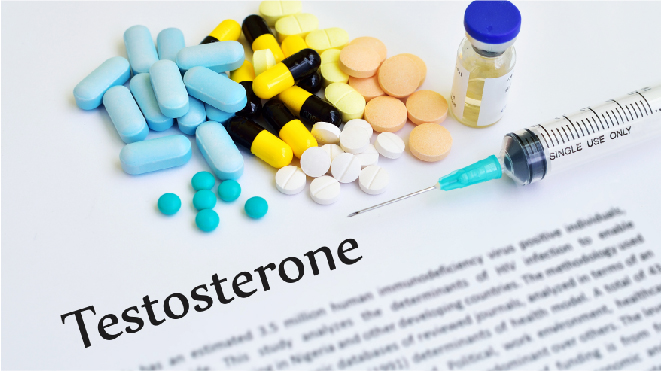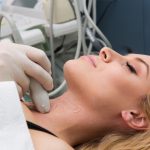Testicular cancer is the cancer in the testicles, the male reproductive organ that makes hormones and sperm. To learn more about testicular cancer, read here.
Drugs in the treatment of testicular cancer:
Several drugs are used in the treatment of cancers, for the treatment of testicular cancer, drugs used commonly are listed below along with the major side effects of the drugs used. These are mostly chemotherapeutic in nature, read more about chemotherapy for testicular cancer here.
Bleomycin:
Also called blenoxane, bleomycin, is a clear, colourless solution that may be mixed into larger bags of fluids. It has a cell cycle phase specific mechanism of action.
The fermentation of streptomyces verticillus produces an antibiotic complex known as Bleomycin.it causes single and double stranded DNA breaks through formation of an intermediate iron complex. DNA synthesis and to a lesser degree RNA and protein synthesis are inhibited on using this drug. It is widely used to treat testicular cancer, however it cannot be taken orally. Caution should be taken when it is taken along with nephrotoxic drugs as they may reduce bleomycin clearance. Bleomycin for testicular cancer should be used with extreme caution in patients with pre existing renal or pulmonary diseases and in patients over the age of 70 years.
Adverse Effects:
- Arterial thromboembolism may occur in a early stage of injection.
- Hypotension may occur immediately after injection in some cases, however is a rare condition.
- Partial alopecia, nail disorder, pruritus, rashes, skin hyperpigmentation are some of the dermatologic side effects which set in early days after taking this drug.
- Fever, chills, pain in the tumour are very common side effects caused by bleomycin.
- Anorexia is common side effect seen along with mild nausea and vomiting.
- An abnormal renal function is very rarely caused but possible side effect. Mucositis, disseminated intravascular coagulation, hemolytic uremic syndrome, phlebitis etc., are the most infrequent side effects seen in the site of injection.
- Anaphylaxis is a side effect seen in lymphoma patients on taking this drug.
Carboplatin
Also known as Paraplatin AQ, carboplatin is a clear, colourless solution mixed into larger bags of fluids and can be taken both orally and through veins however the absorption is higher intravenously.
Carboplatin is considered to be non specific cell cycle phase, but recent studies have shown complex and variable effects on the cell cycle. Carboplatin is a cisplatin derivative and works with the same mechanism of action. Highly reactive platinum complexes are formed intracellularly after injection. These complexes inhibit DNA synthesis through binding of DNA molecules to form intrastrand and interstrand DNA crosslinks.
Adverse effects:
- Hearing can be impaired by about 15%, partial visual impairment may also occur due to the effect of this drug on CNS.
- Arterial thromboembolism, hypertension, venous thromboembolism may occur in the early stages of injection.
- Alopecia is rarely seen as a side effect after using carboplatin for treating testicular cancer.
- Anorexia, constipation, diarrhea, nausea, vomiting are general adverse effects observed.
- Abnormal electrolyte(s) (decrease in Na, K, Ca, Mg) may be noted.
- Severe nephrotoxicity may occur in the early stages.
- Secondary malignancy may be seen in the later stages of injection.
Etoposide
Also known as vepesid, etoposide is a injectable, clear pale yellow solution mixed into larger bags of fluids or orally taken in pink capsules, it is efficient in both forms. Etoposide is cell cycle phase specific too. It is a semi synthetic podophyllotoxin derived from the root of podophyllum peltatum. It is known to cause single strand breaks in DNA. Etoposide also causes DNA damage through inhibition of topoisomerase II and activation of oxidation-reduction reactions to produce derivatives that bind directly to DNA. Topoisomerase II carries out breakage and reunion reactions of DNA which are necessary for normal cellular function.
Adverse effects:
Extravasation is the inadvertent leakage or escape of a drug or solution from a vein or the unintentional injection into surrounding healthy tissue that can cause pain at the injection site or along the vein, with or without an inflammatory reaction and is a common side effect.
- Arrhythmia, arterial thromboembolism, flushing, hypertension may be seen as a side effects.
- Alopecia is one of the major side effects of etoposide in testicular cancer treatment. Nail discoloration or skin discolouration is a very low occurring side effect that can be seen after weeks to months from injection.
- Erythematous maculopapular rash, palmar erythema may occur under high dose protocol.
- Stevens-Johnson syndrome, toxic epidermal necrolysis may rarely occur in the initial stages of injection. abdominal pain, diarrhea and anorexia are evidently observed.
- Constipation, mucositis, nausea are some of the infrequent side effects.
- Hematological side effects like leukopenia (grade 4), thrombocytopenia etc may be seen in early stages of injection.
- LFTs may be severe with high dose protocols.
- Drug reactions like type 1 anaphylactoid can be seen in hypersensitivity patients
- Compensated metabolic acidosis may be seen in high dose protocols scenarios and can occur in early stages or later stages of injection.
- Secondary leukemia may occur in the later stages of injection and several nervous system disorders like depression, dizziness and dysgeusia may be seen.
- Seizure, somnolence, cortical blindness are among the rarely caused but possible side effects.
Side effects are noted in any treatment method and post treatment care is essential for the patient, read more follow up after testicular cancer treatment here.




